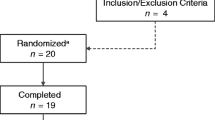Summary
The annual cost of managing migraine totals billions of US dollars. This retrospective economic analysis of a clinical trial comparing subcutaneous dihydroergotamine mesylate (DHE) with subcutaneous sumatriptan in the treatment of acute migraine is appropriate because, although each product has been shown to be efficacious, the acquisition cost of sumatriptan is over 3 times that of DHE. Total costs in each treatment group were calculated and applied independently to 11 clinical trial efficacy measures.
Three of the efficacy measures showed no statistically significant difference between treatment arms, leading to a decision to use the less expensive DHE. In 4 of the efficacy measures, DHE was the obvious choice because it is more efficacious and less expensive. For the final 4 efficacy measures, where sumatriptan is more efficacious and more expensive, incremental cost-efficacy ratios were calculated to determine the additional expenditure required to achieve outcomes associated with quick relief.
Depending on the efficacy variable chosen and the assumptions used in the model, the incremental cost-efficacy ratios ranged from $US4000 to $US6700 per year (1993 dollars) for each additional patient who is successfully treated with sumatriptan compared with DHE. Therefore, in a population of 100 migraineurs, an additional 13 to 22 patients would achieve these short term benefits of sumatriptan, although it would cost an additional $US88 395 annually, given the assumptions made. Because each product has unique advantages, we conclude that the more cost-efficacious product is dependent on the outcome of interest and the amount that the patient or provider is willing to pay to achieve that outcome.
Similar content being viewed by others
References
Rappaport AM. Recurrent migraine: cost-effective care. Neurology 1994; 44 Suppl. 3: S25–8
Winner P, Ricalde O, LeForce B, et al. A double-blind study of subcutaneous dihydroergotamine versus subcutaneous sumatriptan in the treatment of acute migraine. Arch Neurol 1996; 53: 180–4
Kozma CK, Mauch RP, Reeder CE, et al. A literature review comparing the economic, clinical and humanistic attributes of dihydroergotamine and sumatriptan. Clin Ther 1994; 16(6): 1037–51
Welch KMA. Drug therapy of migraine. N Engl J Med 1993; 329(20): 1476–83
Stang PE, Osterhaus JT. Impact of migraine in the United States: data from the national health interview survey. Headache 1993; 33: 29–35
Headache Classification Committee of the International Headache Society. Classification and diagnostic criteria for headache disorders, cranial neuralgias and facial pain. Cephalgia 1988; 8 Suppl. 7: 1–96
Ziegler DK, Hassanein RS. Specific headache phenomena: their frequency and coincidence. Headache 1990; 30: 152–6
Rasmussen BK, Olesen J. Migraine with aura and migraine without aura: an epidemiological study. Cephalgia 1992; 12: 221–8
Silberstein SD, Lipton RB. Epidemiology of migraine. Neuroepidemiology 1993; 12: 179–94
Stewart WF, Lipton RB, Celentano DD, et al. Prevalence of migraine headache in the United States: relation to income, race and other sociodemographic factors. JAMA 1992; 267(1): 64–9
Friedman MD, Friedman DA. DHE 45 in the treatment of migraine: preliminary clinical observations. Ohio State Med J 1945; 41(12): 1099–100
‘DHE 45’ (dihydroergotamine mesylate) injection product information. East Hanover (NJ): Sandoz Pharmaceuticals Corporation, 1993 Apr
Klapper JA, Stanton J. Clinical experience with patient administered subcutaneous dihydroergotamine mesylate in refractory headaches. Headache 1992; 32(1): 21–3
‘Imitrex’ (sumatriptan succinate) injection product information. Research Triangle Park (NC): Cerenex Pharmaceuticals, 1994 May
Sumatriptan, serotonin and money [editorial]. Lancet 1992; 339: 151-2
Kenyon J, editor. Optimum treatment of acute migraine and the place of sumatriptan in therapy. Drug Ther Perspect 1993; 1(1): 1–4
Average Wholesale Prices. Medi-Span Inc: 1995 Jul 1
Bootman JL, Townsend RJ, McGhan WF. Principles of pharmacoeconomics. Cincinnati (OH): Harvey Whitney Books Company, 1991: 89
US Bureau of the Census. Statistical Abstract of the United States: 1993. 113th ed. Washington, DC: The Reference Press, 1993
Ukens C. Pharmacist salaries: who’s getting the bigger bite? Drug Topics 1993; 137(7): 42–54
Author information
Authors and Affiliations
Rights and permissions
About this article
Cite this article
Payne, K., Kozma, C.M. & Lawrence, B.J. Comparing Dihydroergotamine Mesylate and Sumatriptan in the Management of Acute Migraine. Pharmacoeconomics 10, 59–71 (1996). https://doi.org/10.2165/00019053-199610010-00006
Published:
Issue Date:
DOI: https://doi.org/10.2165/00019053-199610010-00006




